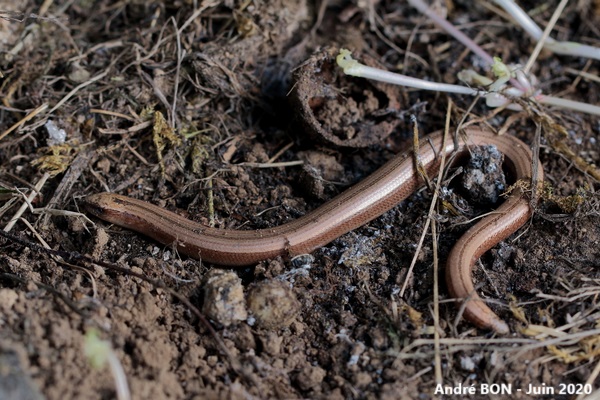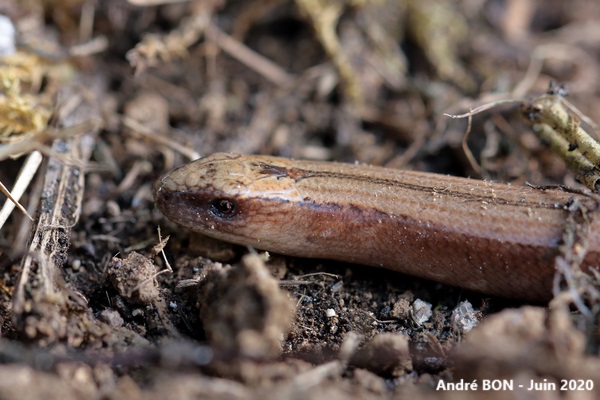

| Common Slow Worm (Anguis fragilis (Linnaeus, 1758)) |


|
|
Scientific name: Anguis fragilis (Linnaeus, 1758) Common name: Common Slow Worm French name: Orvet fragile, Orvet commun. Order: Squamata Suborder: Sauria Family: Anguidae Size: Total length: 40 to 45 cm, some individuals can exceptionally exceed 50 cm. The body can measure up to 22 cm, the rest of the length is for the tail. Habitat : Habitats with dense vegetation, slightly humid and shaded, forests, groves, embankments, wastelands, hedges, meadows with tall vegetation, parks and gardens. Food: Earthworms, slugs, insects and their larvae, spiders, woodlice. Reproduction : Mating takes place between April and June. The Common Slow Worm is ovoviviparous, meaning that the eggs hatch inside the female and it gives birth directly to 3 to 20 young, usually towards the end of summer. Geographic area: Europe except southern Iberian Peninsula and Nordic countries, Turkey, Iran. |
The Common Slow Worm is a legless lizard that resembles a snake. The body is elongated and regular with no clear mark between the head and the trunk or between the trunk and the tail. The end of the tail appears truncated. The body is covered with shiny, smooth scales of uniform size. Males have plain brown flanks with occasional reddish or blue spots. Females have blackish flanks with a lighter back that may have a thin black dorsal line. The eyelids are mobile unlike snakes. The Common Slow Worm has the ability to lose its tail to escape a predator. It is a burrowing animal that digs galleries or takes refuge in existing burrows. It hibernates underground. |
| [To know more about the Common Slow Worm] [Next picture] [Top] |

|
I found this Common Slow Worm while moving a stone under which it had settled. There is a thin black dorsal line but the sides are not really blackish. Is it a juvenile? |
| [To know more about the Common Slow Worm] [Previous picture] [Top] |

|
Close-up of the head. We can clearly see that there is no clear separation between the head and the trunk. |